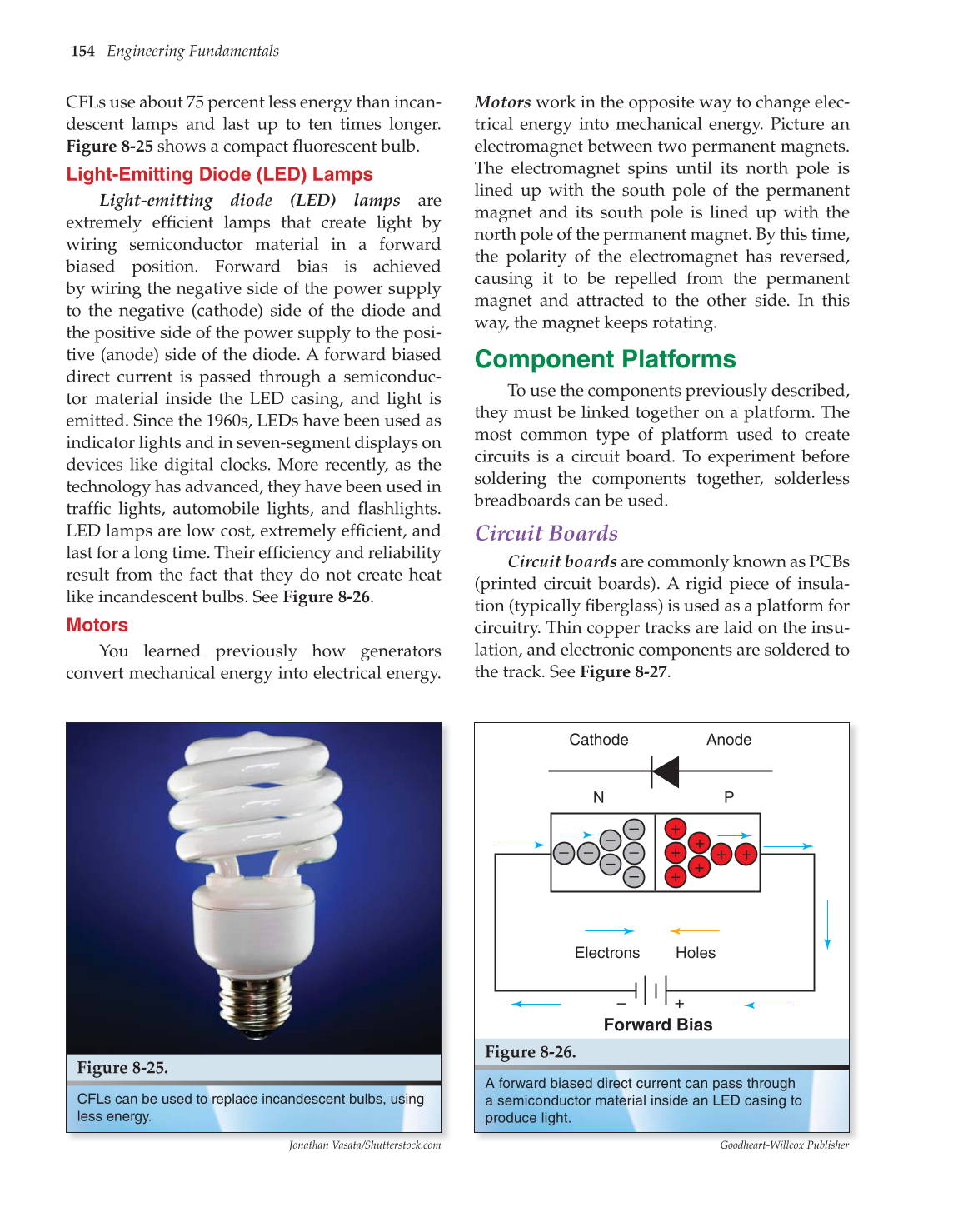154 Engineering Fundamentals
CFLs use about 75 percent less energy than incan-
descent lamps and last up to ten times longer.
Figure 8-25 shows a compact fl uorescent bulb.
Light-Emitting Diode (LED) Lamps
Light-emitting diode (LED) lamps are
extremely effi cient lamps that create light by
wiring semiconductor material in a forward
biased position. Forward bias is achieved
by wiring the negative side of the power supply
to the negative (cathode) side of the diode and
the positive side of the power supply to the posi-
tive (anode) side of the diode. A forward biased
direct current is passed through a semiconduc-
tor material inside the LED casing, and light is
emitted. Since the 1960s, LEDs have been used as
indicator lights and in seven-segment displays on
devices like digital clocks. More recently, as the
technology has advanced, they have been used in
traffi c lights, automobile lights, and fl ashlights.
LED lamps are low cost, extremely effi cient, and
last for a long time. Their effi ciency and reliability
result from the fact that they do not create heat
like incandescent bulbs. See Figure 8-26.
Motors
You learned previously how generators
convert mechanical energy into electrical energy.
CFLs can be used to replace incandescent bulbs, using
less energy.
Figure 8-25.
Jonathan Vasata/Shutterstock.com
–
–
– –
–
–
–
+
–
+
+
+
+
+
+
+
Cathode Anode
Electrons
N
Forward Bias
Holes
P
A forward biased direct current can pass through
a semiconductor material inside an LED casing to
produce light.
Figure 8-26.
Goodheart-Willcox Publisher
Motors work in the opposite way to change elec-
trical energy into mechanical energy. Picture an
electromagnet between two permanent magnets.
The electromagnet spins until its north pole is
lined up with the south pole of the permanent
magnet and its south pole is lined up with the
north pole of the permanent magnet. By this time,
the polarity of the electromagnet has reversed,
causing it to be repelled from the permanent
magnet and attracted to the other side. In this
way, the magnet keeps rotating.
Component Platforms
To use the components previously described,
they must be linked together on a platform. The
most common type of platform used to create
circuits is a circuit board. To experiment before
soldering the components together, solderless
breadboards can be used.
Circuit Boards
Circuit boards are commonly known as PCBs
(printed circuit boards). A rigid piece of insula-
tion (typically fi berglass) is used as a platform for
circuitry. Thin copper tracks are laid on the insu-
lation, and electronic components are soldered to
the track. See Figure 8-27.
